There are moments when you’re racing in Dakar Desert Rally where the grandeur of your surroundings takes your breath away. Sand dunes bigger than an apartment block ahead, an abandoned fuselage to your left and a truck barrel rolling to your right.
Reminiscent of a Mad Max: Fury Road scene, there’s something about machines aggressively racing across a barren landscape that looks so spectacular.
Parts of your rivals shed across the route, motorcycle riders are on an apparent suicide mission and, wait is that water or a mirage?
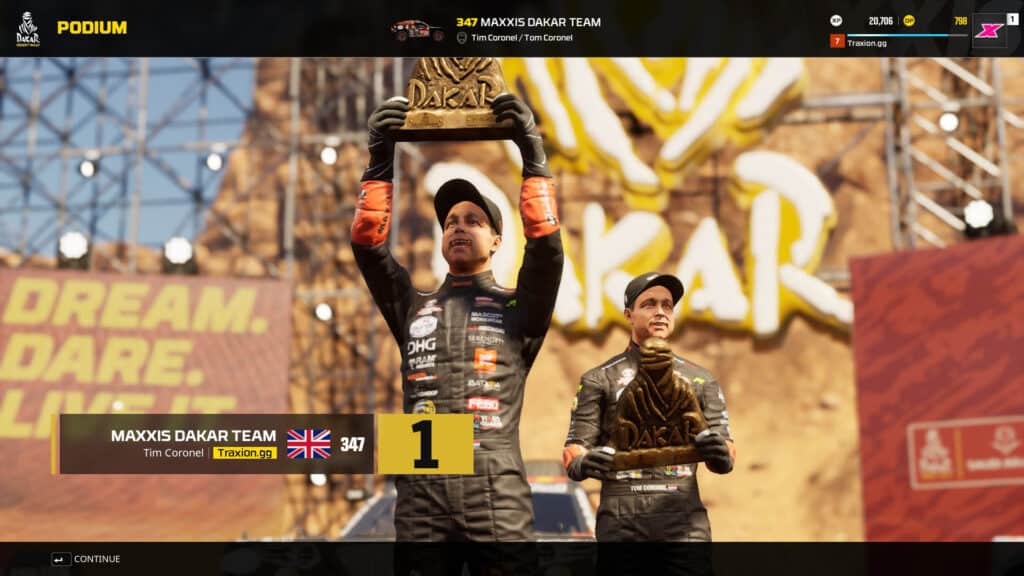
It mixes these chaotic surroundings with five vehicle types, closely fought racing, navigational challenges, team management and unlockable historical content. There are three distinct game modes too, trying to make this platform simultaneously approachable and serious.
There’s no doubt it is the most ambitious driving video game in a generation, but does it pull all the pieces together into one coherent experience? Let’s find out…
When game developers Bigmoon Entertainment, now Saber Porto, took three years off to evolve from the troubled Dakar 18 into a new official release based on the real-world rally raid event, it’s clear the environment design was the main priority.
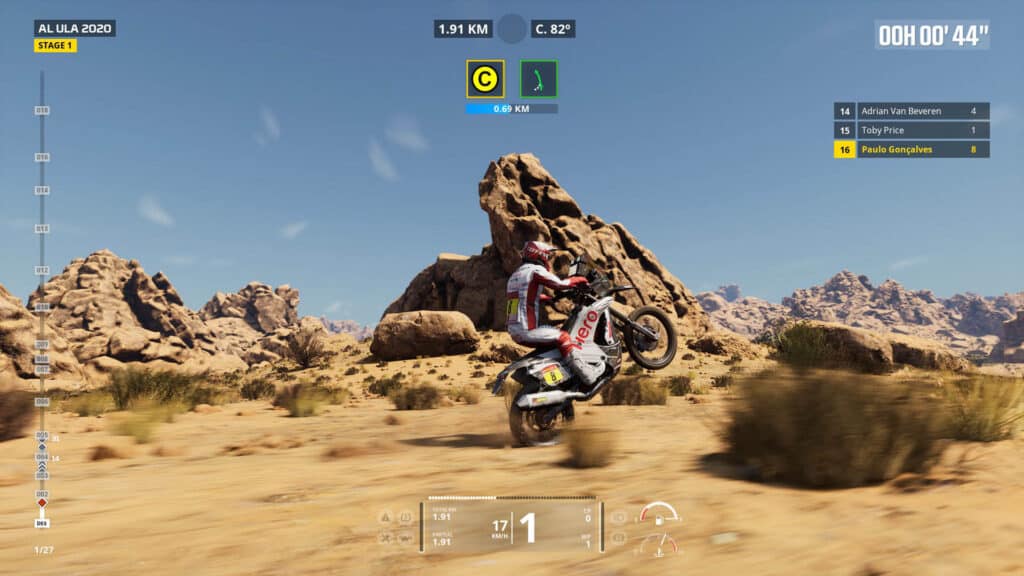
Despite in the intervening years the Dakar moving from South America to purely Saudi Arabia, somehow its more detailed, varied and surprising than ever. The scope is vast too, with an area of over 20,000 km2 and it includes a fully dynamic weather system – even if the Middle East isn’t strictly known for its rain.
The events you take part in, in either a licenced car, truck, motorcycle, quad bike or SXS within the Sport Mode are initially short and sharp, before they grow to challenges lasting over 400km and several individual stages.
Here, you race for position, although there are time penalties for missing waypoints – which are giant yellow beacons in this mode – and having to stop to repair your ride can be applied to you and your AI-controlled competitors.
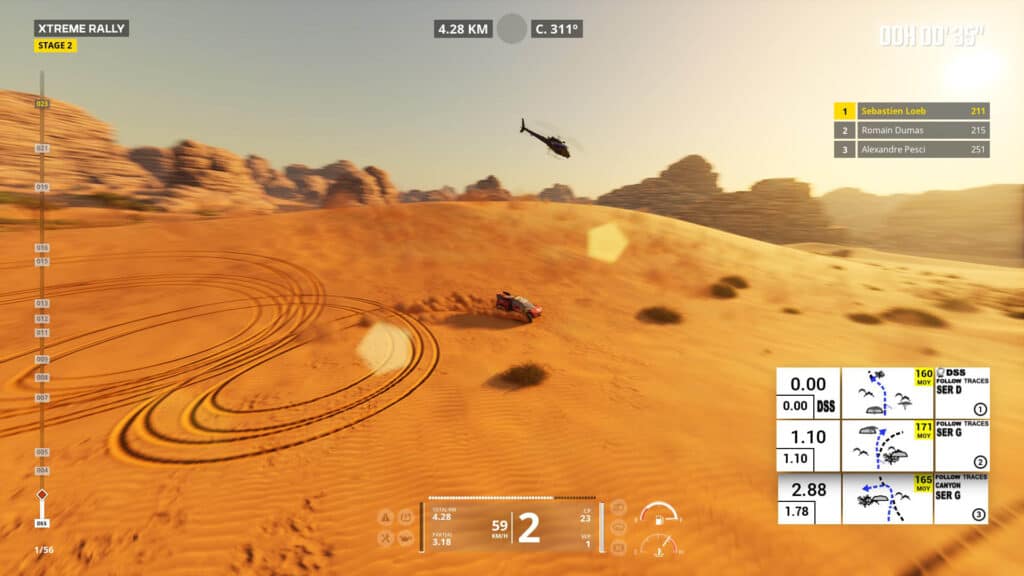
Finish a race, earn XP, move up levels. Levels unlock more cars to buy and more events to race. Dakar Points (DP) are also accrued, used to repair your vehicle fleet and expand your roster.
As an added bonus, if you win the same event across the five vehicle types, you unlock a classic car or bike from the event’s storied history.
It’s a progression system that the prior Dakar game was sorely in need of in order to captivate a wider audience.
To temper things slightly, if you are going all-out accessible racing game, you may as well through in some different event types or optional challenges to mix things up a little. While the environment changes, the derivative race format does not.
After a few races, you’ll likely test out the Professional Mode. Here, you aren’t flying off the start line with a pack of wildly erratic rivals, but instead, you begin on your lonesome. The primary goal is to navigate through a route, listen to your navigator closely, follow the CAP target, which acts like a compass and compete on time alone.
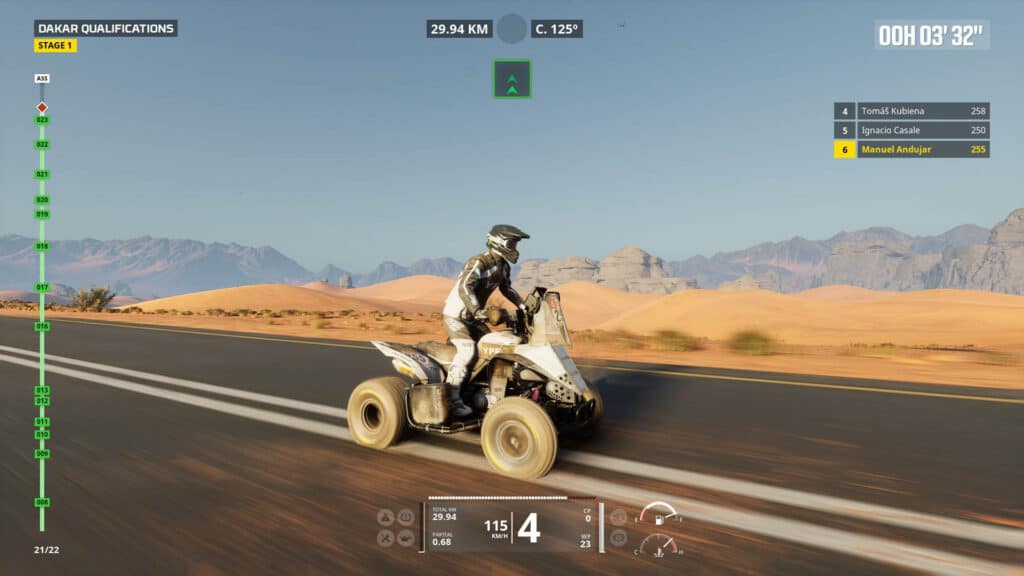
This is how the actual Dakar event is measured come December. A more traditional approach, adjusting to the slightly slower pace and focus of this game type takes some time.
At first, you may feel discombobulated, struggling to work out where to go next. The stages can feel interminable, as you look at the remaining marker points on the HUD like checking how long’s left in a Jason Statham movie.
However, bear with us here, this is where the main appeal is. There is a satisfaction to getting slightly lost, retracing your steps – thankfully the navigator now gives you CAP clues if you go off-piste – and then finding your way again.
A lapse in concentration will be punished. The navigator (who isn’t present when using bikes or quads for obvious reasons) occasionally throws you a call late too, which can mean a missed junction. Headphones on, doors closed, phone off. Focus and you will be rewarded.
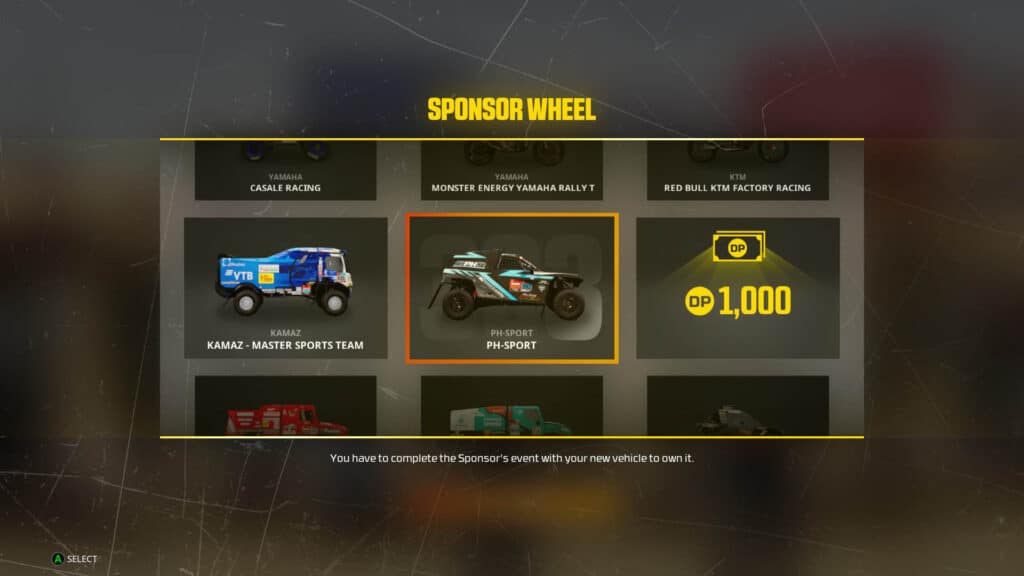
It’s a shame, then, that apart from your garage collection, DP and XP, the actual race results are separated from Sport to Professional mode. Even though the events are entitled the same, in effect, this is a separate set of challenges that you must progress through once more.
Then, finally, we have the Simulation Mode. This strips away any auto-saving functionality at the waypoints, adds a speed limit and dramatically increases the stage lengths. It does not feature cars getting stuck, like in the prior game. This is for the hardcore Dakar cognoscenti.
Except, it only unlocks at XP Level 25, and in our experience that takes a minimum of 10 hours playing the more accessible modes to achieve. Personally, we enjoyed this sense of accomplishment, but the frustration from the simulation-focused section of the fanbase is palpable.
Regardless of game mode, the modelling deserves special mention. The number of variants you can drive or ride is eye-opening, despite lacking the Mini brand, sadly.
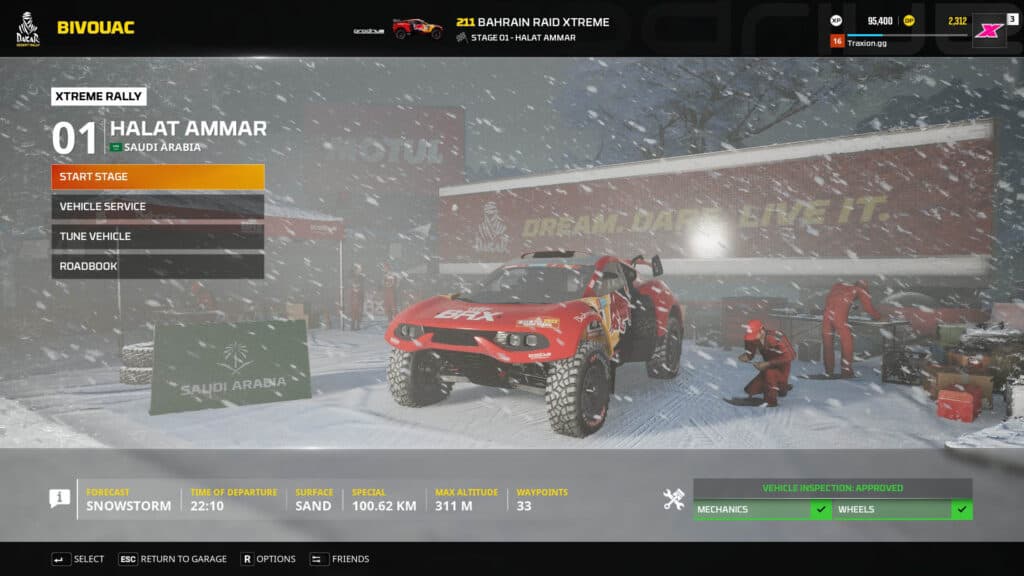
Each is representative of the real thing, with detailed interiors, exhaust notes and liveries. But not driver faces, strangely, those podium animations do look a bit awkward as everyone has the same face.
There’s a full damage model too, with windows smashing, roof panels squashed and wheels detaching.
With such variety comes potential pitfalls in terms of handling. The physics engine must simulate several unique vehicle types, and so across the board, it feels a little numb. The motorcycles perhaps come off worst, lacking in precision, and strangely, you can ride them using a steering wheel peripheral if you so choose.
But hop in an SXS, and they feel lithe and agile, with a gamepad or a wheel, while the trucks rightly lumber about requiring full turns of a rim lock-to-lock to navigate tighter turns.
The cars then feel somewhere in between. During small corrections, the feedback is satisfying, but perhaps in our testing with Logitech equipment, they require too much input to get the desired response. We have tried it with Thrustmaster wheels and received more nuanced behaviour and the development team is continuing to refine this post-launch. Fanatec wheels will be updated soon.
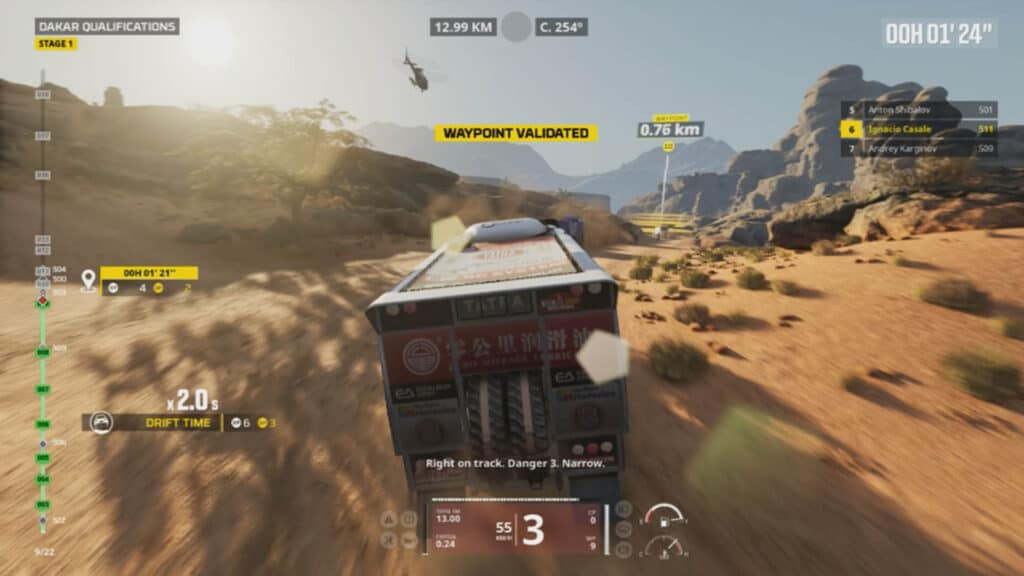
Speaking of post-launch, however, we come to the biggest frustration with Dakar Desert Rally. What’s there now is enjoyable, but it could be even more so were it not for the fact that several main features simply aren’t here yet.
Expected upon release, the ability to compete across the 2020, 2021 and 2022 Dakar events in its real-world format simply isn’t present. That’s coming with the free ‘Extended Map’ downloadable content, expected within days of the game’s release.
Online PvP racing is present, including the ability to take over an AI-controlled bot mid-event and even fly a spectator helicopter, but the ability to create and share your own road books – read, routes – amongst the giant map is also missing, currently scheduled for some time before the end of the year. As is the ability to free roam around the aforementioned 20,000 km2 environment.
Being able to create your own team and livery or paint scheme is slated for 2023.
Damn.
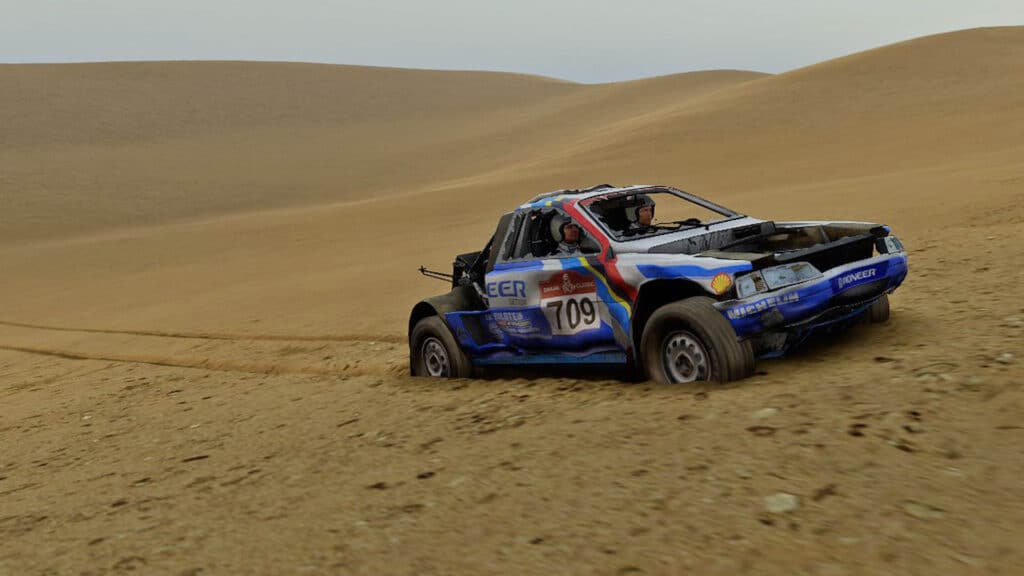
When we created our preview at Gamescom, the game ticked all the boxes. It sounded so promising. It’s a shame then, that it still sounds promising, as in, the vision isn’t quite fully realised as it stands.
A lack of replays and photo modes until next year would normally not be noteworthy, but because the vehicles and environment are so luscious, they deserve to be seen in the best light.
We admire the incredible goals set by the team. With a long gestation period already passed, we can only assume it was better to cut out some elements than release something with potential bugs.
But it still smarts, just a little. In our minds, this is still the best Dakar game ever, regardless, and if the roadmap is delivered as promised, there’s still time for Dakar Desert Rally to become one of the all-time greats. Let’s see.

| Developer | Saber Porto |
| Release date | 4th October 2022 |
| Available platforms | PC, PlayStation 4, PlayStation 5, Xbox One and Xbox Series X|S |
| Versions tested | PC |
| Best played with | Controller |
Full disclosure: A code for the game was provided by the publisher for review purposes. Here is our review policy.
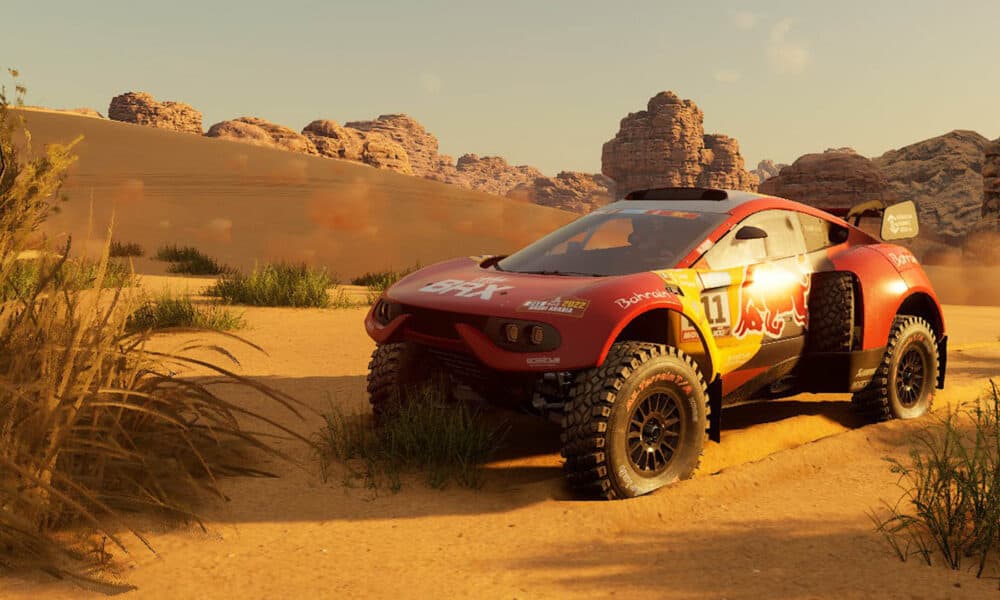




Chat with the Community
Sign Up To CommentIt's completely Free